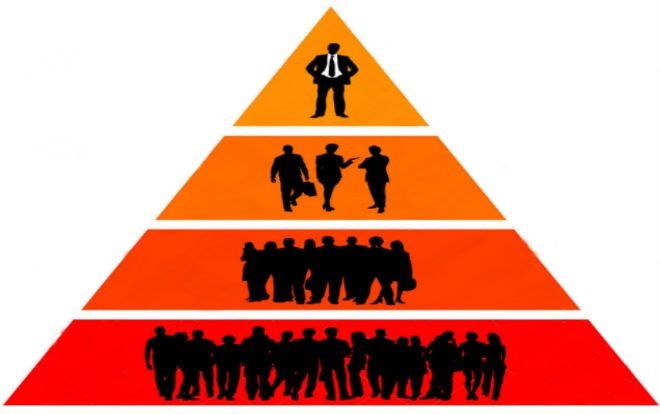Hierarchy: How to manage or fine tune in small organisation ?

We do actually come up with few questions when we talk about organisation hierarchy i.e
- Do we really need a hierarchy in small organization ?
- Will it disturb the equilibrium of small organization ?
- How could we actually justify the designation in small organization?
- How to bear or sustain additional financial cost for higher designation?
We cannot avoid hierarchy...!!! humans are like pack of wolf,we always crave for authority or a leader to look upon, even when we put two or three people to work on anything physiological hierarchy is created based on their genetic program,based human traits we separates our task and focus on completion.so even if our organisation has flat hierarchy the difference is often reflected. so teaming up right resources is important.generally we define layers in organisation and fill the bucket to build a team.so even if have small organisation 8 to 10 people we need hierarchy,but not many layers which separates them which result in negative impact.
Usually any domain we have basic 3 layers and many flavors.
-
Top layer (Management Layer)
This layer usually have Financial authority and leads to bring work on the table -
Middle Layer
This layer has the certain authorized or access controlled authorities which facilitate bridge for resource and task distribution -
Lower Layer
The Hungry layer does most of the work under instruction.
So any tiny organization top and bottom layer is default.based on the necessity either lower level is stepped up or top layer is stepped down to bridge the gap of middle layer,And to create the balance and to attain certain maturity top layer stepping down has benefits,if that remains for the long duration growth starts declining,so top layer should expand horizontally and bottom layer vertically to have the equilibrium.And in the long run we might run into stagnant phase where middle layer and lower layer gets unchanged which results in lot of unexpected problems,the attrition rate would increase which leads to gaps between the layers. to fill the gap we might place a orange instead of apple,and start a chain reaction which might impact the brand value of the organization,to solve this top layer should identify incremental evolution methods like creating more horizontal space or vertical height to accommodate the growth.
So creating the space of growth...!!!
-
Lower layer
- lower level attain vertical heights quickly.either in knowledge or in the defined process,simple approach is widen the perimeter of the circle gradually and equally,and showcase planned transparent chart of the growth perimeter,where individual will focus on interested sector,and carefully enforce on the required sector for quicker jumps.
- providing the jump in financial benefit and challenging responsibility and interesting learning curve.
- mandate the travel in every sector of a circle initially and allow to chose the sector where individual is strong in.to much travel might result in famous proverb
Jack of all trades master of none..!!! - facilitate necessary training to fill the gap in the circle.
- divide the weight of roles and responsibility between individual.
- increase the healthy collaboration between vertical layers.
- evaluate the problems, focus on resolution instead of ignoring
-
Middle layer
- Gradually widen the authorized responsibility on fixed time line.
- Provide a monitored platform where individual's ideas or suggestion is respected
- Promoted mandated learning on individual core domain,
- Introduce 360 degree review for a person from a lower layer and upper level to prevent management hazard like one sided decisions.
- Do not enforce pre-determined decision unless it is absolute necessary,
- New recruit with fancy designation incur a fancy financial cost and also we are uncertain about the kind of friction created, safest option is to promote internal growth.train the layer by a capable consultant
- Evaluate the pros and cons of the designation before adopting it.
-
Top layer
- Always have open communication with all the layers, trust the delegation layer but not a blind one.
- Do not enforce the policy without actual feedback from all the layers,
- Always have planned and structured policy before implementation
- Concentrate towards brand expansion and train middle layer on managing daily activity.
- Be informed about minute matters.
- Be a diplomat support for both layer.

